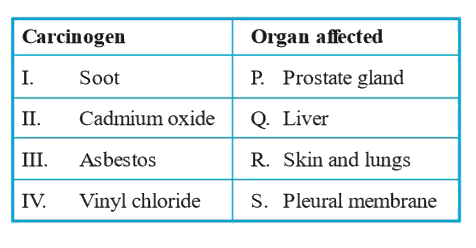Match column I with column II and select the correct option from the given codes.
ColumnIColumnIIA.Eurythermal(i)Able to tolerate narrow range of temperatureB.Stenothermal(ii)A stage of suspended developmentC.Conformers(iii)Body temperature changes with ambient temperatureD.Diapause(iv)Able to tolerate wide range of temperature
A−(iv),B−(i),C−(iii),D−(i)
A−(iv),B−(i),C−(ii),D−(iii)
A−(ii),B−(iv),C−(iii),D−(i)
A−(i),B−(ii),C−(iii),D−(iv)
The correct Answer is:A
To solve the matching question, we will analyze each term in Column I and match it with the correct description in Column II.
1. Identify the terms in Column I:
- A. Eurythermal
- B. Stenothermal
- C. Conformers
- D. Diapause
2. Analyze each term:
- Eurythermal: This term refers to organisms that can tolerate a wide range of temperatures. Therefore, it matches with (iv) "Able to tolerate wide range of temperature."
- Stenothermal: This term refers to organisms that can only tolerate a narrow range of temperatures. Thus, it matches with (i) "Able to tolerate narrow range of temperature."
- Conformers: These organisms do not have mechanisms to regulate their internal environment, meaning their body temperature changes with the ambient temperature. Hence, it matches with (iii) "Body temperature changes with ambient temperature."
- Diapause: This term refers to a stage of suspended development or dormancy that some organisms enter to survive unfavorable conditions. Therefore, it matches with (ii) "A stage of suspended development."
3. Match the terms with their descriptions:
- A - (iv) Eurythermal - Able to tolerate wide range of temperature
- B - (i) Stenothermal - Able to tolerate narrow range of temperature
- C - (iii) Conformers - Body temperature changes with ambient temperature
- D - (ii) Diapause - A stage of suspended development
4. Final Matching:
- A (Eurythermal) → (iv)
- B (Stenothermal) → (i)
- C (Conformers) → (iii)
- D (Diapause) → (ii)
Conclusion:
The correct matches are:
- A - iv
- B - i
- C - iii
- D - ii
Correct Option:
The correct option is A.
- A. Eurythermal
- B. Stenothermal
- C. Conformers
- D. Diapause
- Eurythermal: This term refers to organisms that can tolerate a wide range of temperatures. Therefore, it matches with (iv) "Able to tolerate wide range of temperature."
- Stenothermal: This term refers to organisms that can only tolerate a narrow range of temperatures. Thus, it matches with (i) "Able to tolerate narrow range of temperature."
- Conformers: These organisms do not have mechanisms to regulate their internal environment, meaning their body temperature changes with the ambient temperature. Hence, it matches with (iii) "Body temperature changes with ambient temperature."
- Diapause: This term refers to a stage of suspended development or dormancy that some organisms enter to survive unfavorable conditions. Therefore, it matches with (ii) "A stage of suspended development."
- A - (iv) Eurythermal - Able to tolerate wide range of temperature
- B - (i) Stenothermal - Able to tolerate narrow range of temperature
- C - (iii) Conformers - Body temperature changes with ambient temperature
- D - (ii) Diapause - A stage of suspended development
- A (Eurythermal) → (iv)
- B (Stenothermal) → (i)
- C (Conformers) → (iii)
- D (Diapause) → (ii)
The correct matches are:
- A - iv
- B - i
- C - iii
- D - ii
The correct option is A.
Topper's Solved these Questions
- ORGANISMS AND POPULATIONBOOK - NCERT FINGERTPS ENGLISHCHAPTER - ORGANISMS AND POPULATIONEXERCISE - HOTS
5 Videos
- ORGANISMS AND POPULATIONBOOK - NCERT FINGERTPS ENGLISHCHAPTER - ORGANISMS AND POPULATIONEXERCISE - NCERT
20 Videos
- MOLECULAR BASIS OF INHERITANCEBOOK - NCERT FINGERTPS ENGLISHCHAPTER - MOLECULAR BASIS OF INHERITANCEEXERCISE - Molecular Basis Of Inheritance
151 Videos
- PRACTICE PAPERSBOOK - NCERT FINGERTPS ENGLISHCHAPTER - PRACTICE PAPERSEXERCISE - Practice paper
150 Videos
Similar Questions
Knowledge Check
Match column I with II column II and select the correct option from the given codes .
 AA-(ii), B-(iii), C-(iv), D-(i)BA-(iii), B-(ii), C-(i), D-(iv)CA-(iii), B-(ii), C-(iv), D-(i)DA-(i), B-(ii), C-(iii), D-(iv)
AA-(ii), B-(iii), C-(iv), D-(i)BA-(iii), B-(ii), C-(i), D-(iv)CA-(iii), B-(ii), C-(iv), D-(i)DA-(i), B-(ii), C-(iii), D-(iv)Match column I with column II and select the correct option from the codes given below.
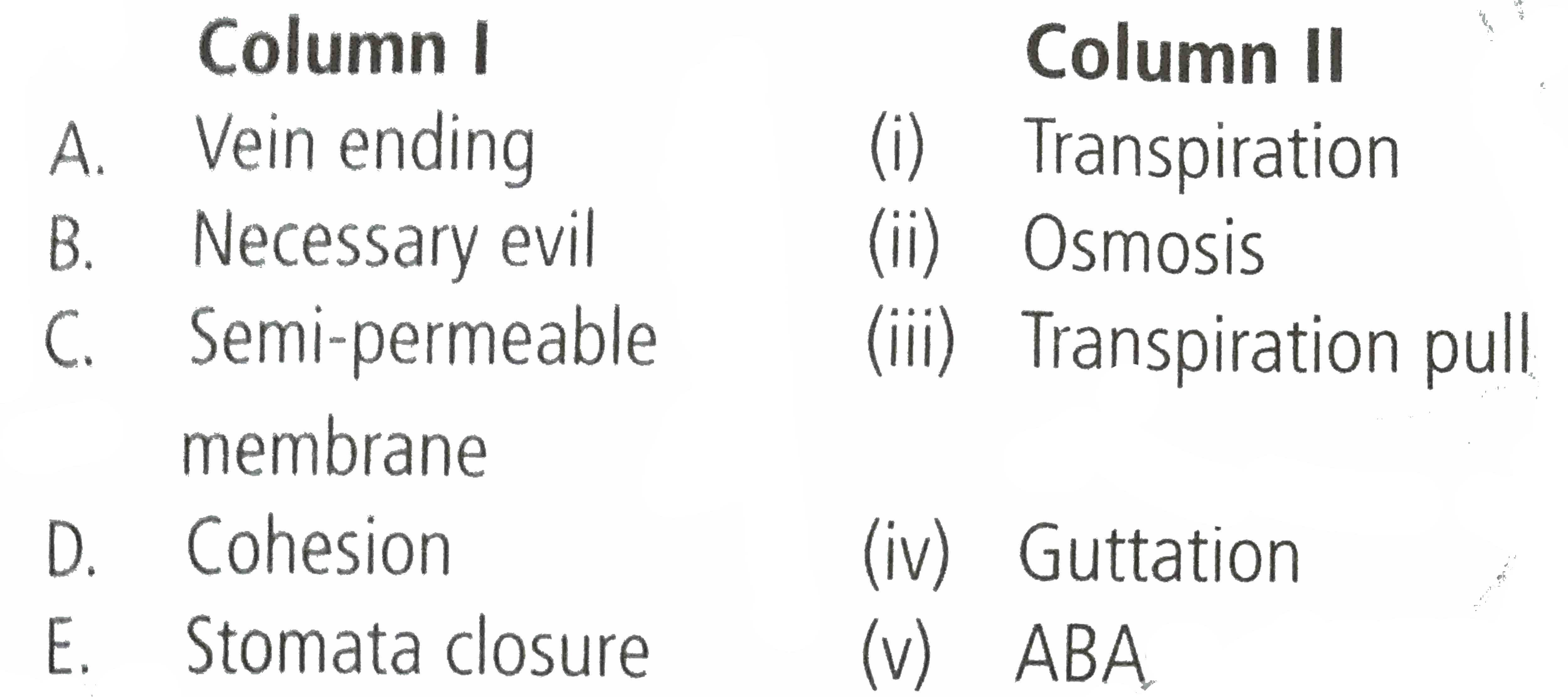 A(i)-D, (ii)-C, (iii)-A, (iv)-BB(i)-A, (ii)-B, (iii)-C, (iv)-DC(i)-D, (ii)-B, (iii)-A, (iv)-CD(i)-A, (ii)-C, (iii)-D, (iv)-B
A(i)-D, (ii)-C, (iii)-A, (iv)-BB(i)-A, (ii)-B, (iii)-C, (iv)-DC(i)-D, (ii)-B, (iii)-A, (iv)-CD(i)-A, (ii)-C, (iii)-D, (iv)-BMatch columnI with column II and select the correct option from the codes given below.
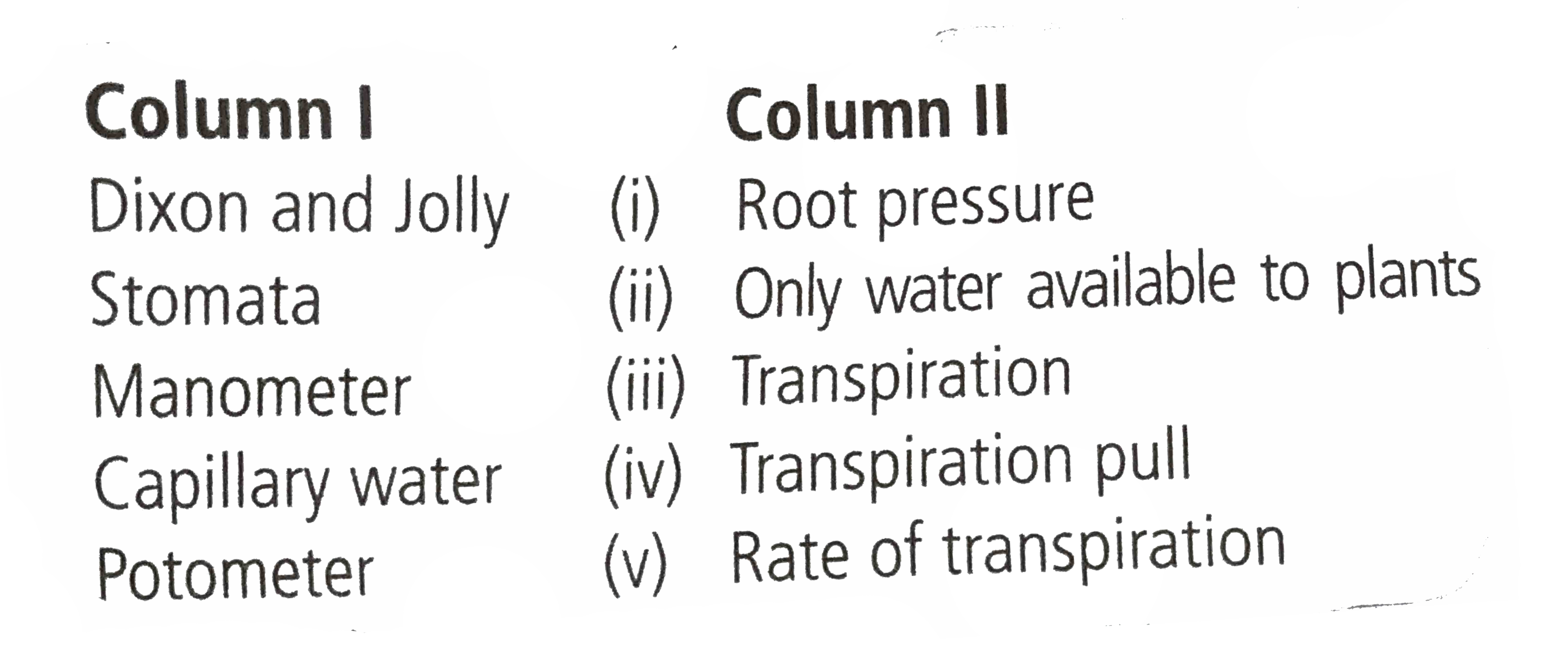 AA−(iv),B−(iii),C−(v),D−(ii),E−(i)BA−(i),B−(iii),C−(iv),D−(ii),E−(v)CA−(iv),B−(iii),C−(i),D−(ii),E−(v)DA−(v),B−(iv),C−(iii),D−(ii),E−(i)
AA−(iv),B−(iii),C−(v),D−(ii),E−(i)BA−(i),B−(iii),C−(iv),D−(ii),E−(v)CA−(iv),B−(iii),C−(i),D−(ii),E−(v)DA−(v),B−(iv),C−(iii),D−(ii),E−(i)
Match column I with column II and select the correct option from the codes given below.
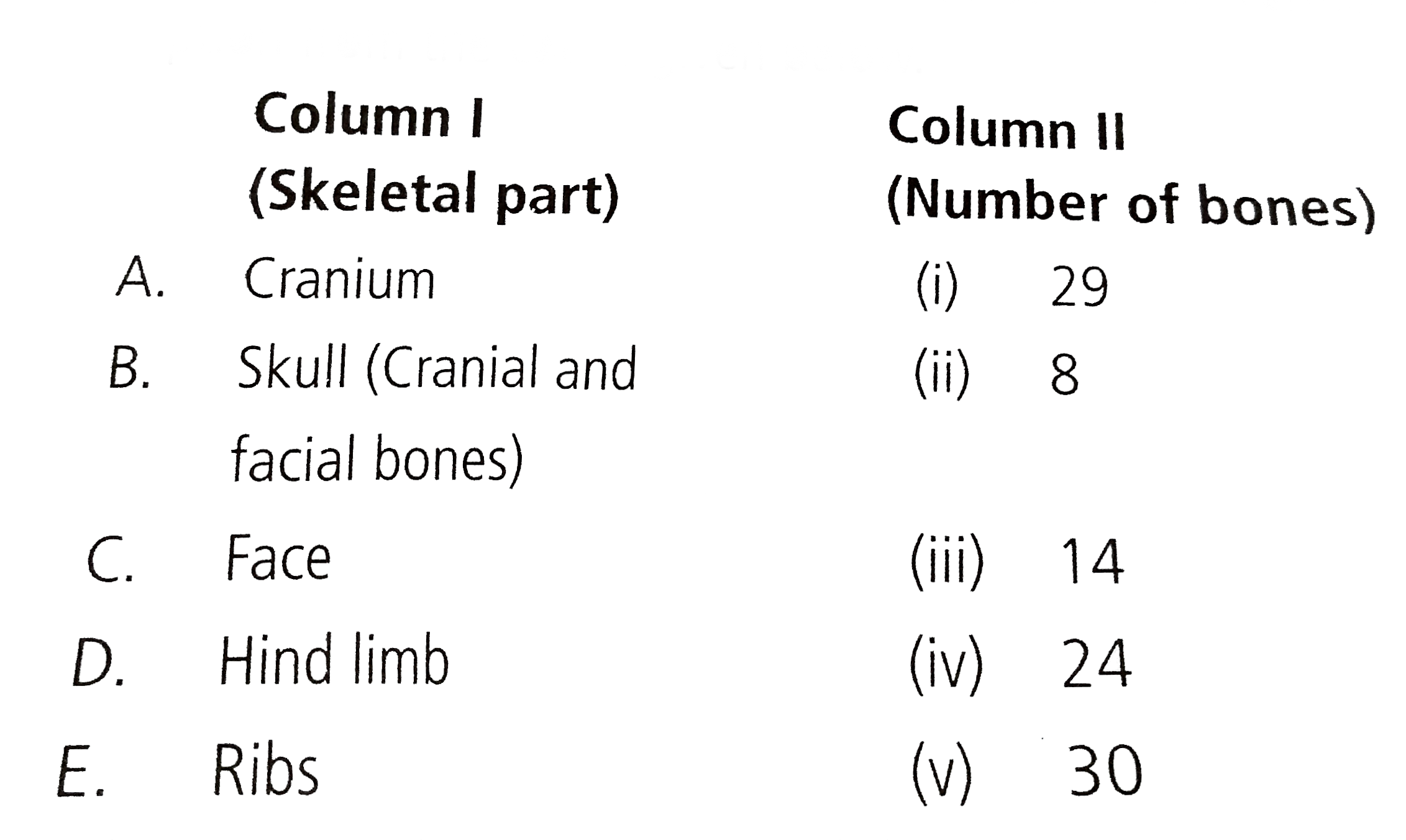
View SolutionMatch column I with column II and select the correct option from the codes given below.

View SolutionMathc column I with column II and select the correct option from the given codes.
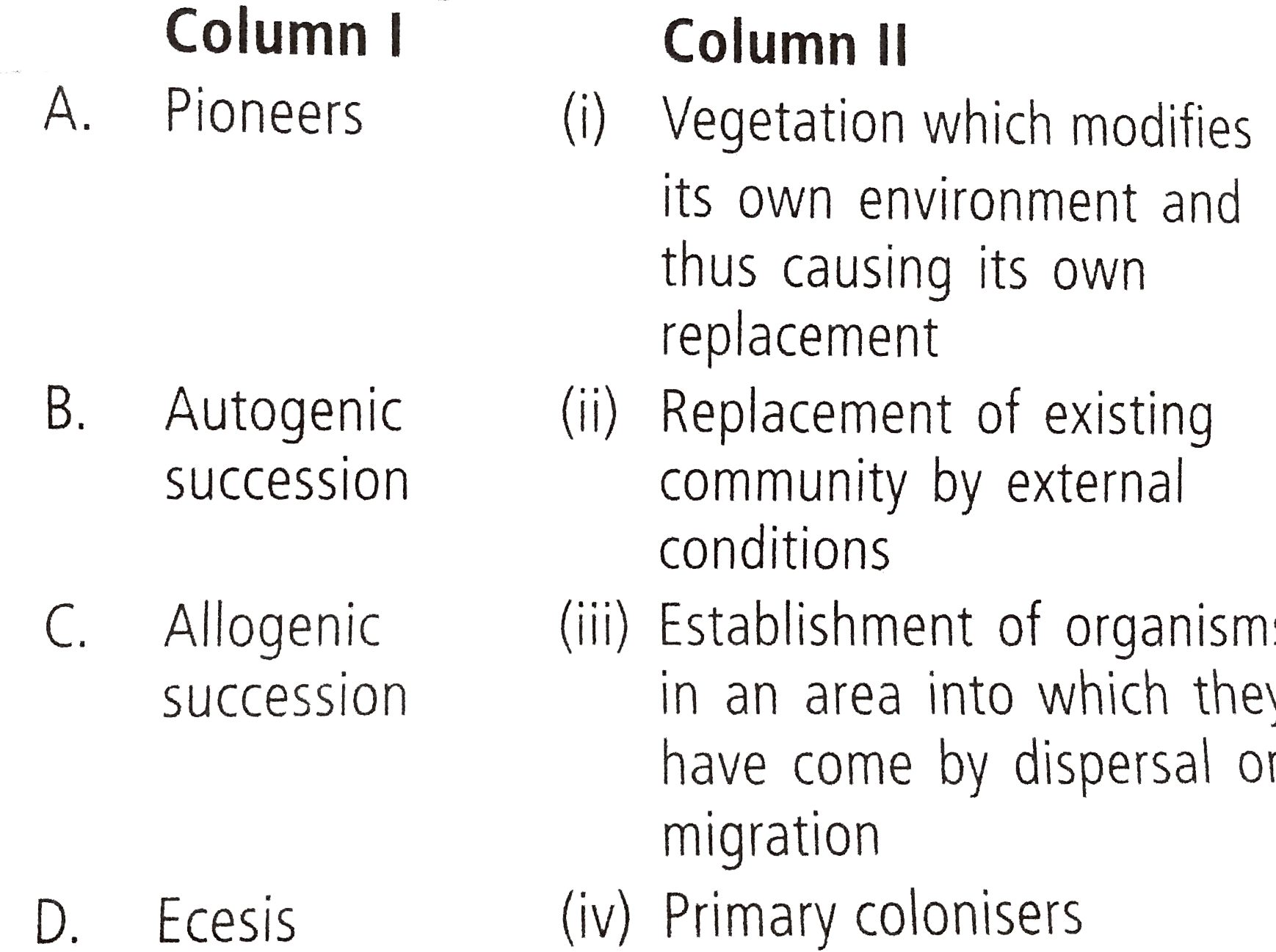
View SolutionMathc column I with column II and select the correct option from the given codes.

View SolutionMatch column I and II and select the correct option from the given codes.

View Solution
